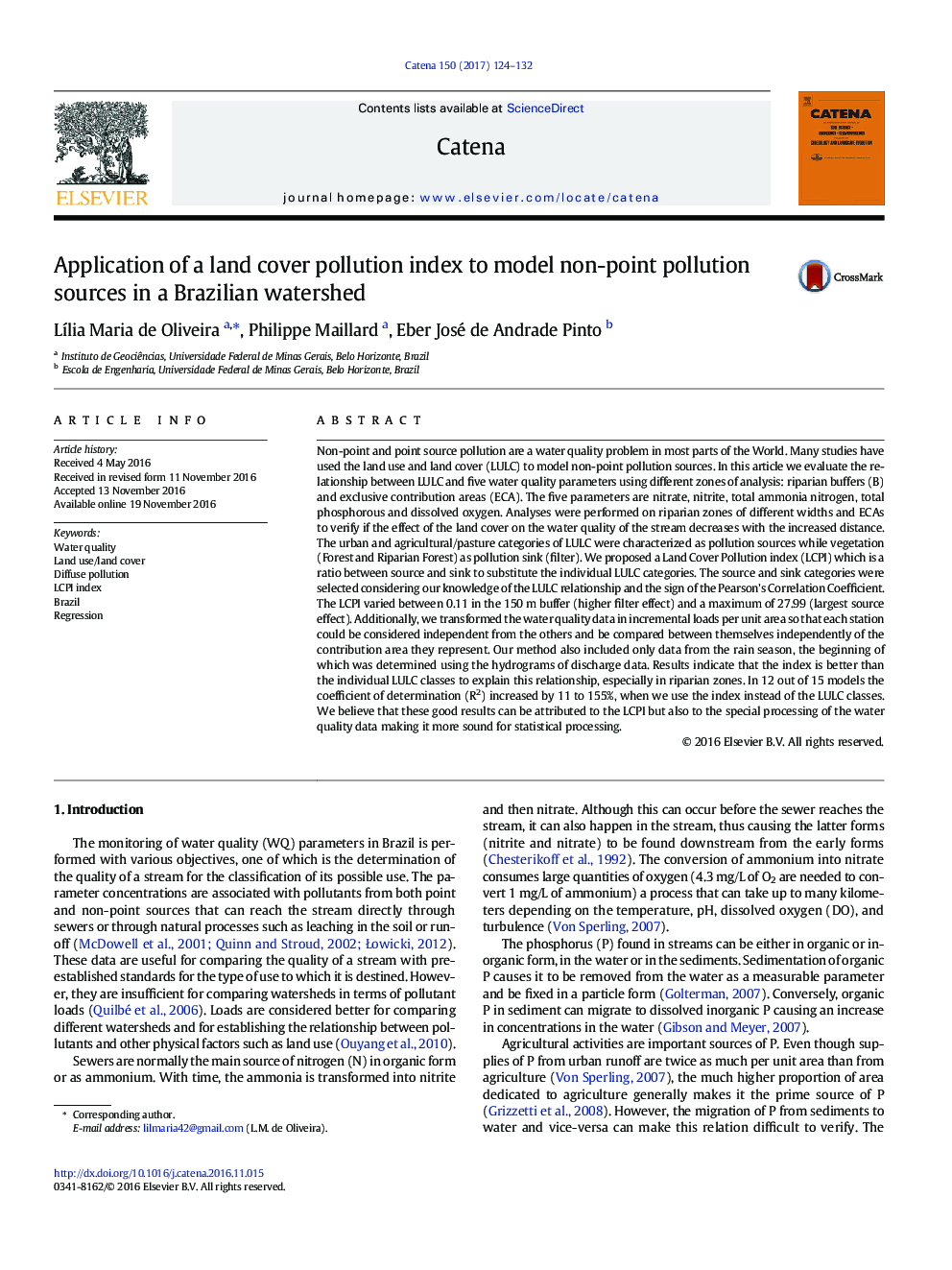| کد مقاله | کد نشریه | سال انتشار | مقاله انگلیسی | نسخه تمام متن |
|---|---|---|---|---|
| 6407646 | 1629204 | 2017 | 9 صفحه PDF | دانلود رایگان |
Non-point and point source pollution are a water quality problem in most parts of the World. Many studies have used the land use and land cover (LULC) to model non-point pollution sources. In this article we evaluate the relationship between LULC and five water quality parameters using different zones of analysis: riparian buffers (B) and exclusive contribution areas (ECA). The five parameters are nitrate, nitrite, total ammonia nitrogen, total phosphorous and dissolved oxygen. Analyses were performed on riparian zones of different widths and ECAs to verify if the effect of the land cover on the water quality of the stream decreases with the increased distance. The urban and agricultural/pasture categories of LULC were characterized as pollution sources while vegetation (Forest and Riparian Forest) as pollution sink (filter). We proposed a Land Cover Pollution index (LCPI) which is a ratio between source and sink to substitute the individual LULC categories. The source and sink categories were selected considering our knowledge of the LULC relationship and the sign of the Pearson's Correlation Coefficient. The LCPI varied between 0.11 in the 150Â m buffer (higher filter effect) and a maximum of 27.99 (largest source effect). Additionally, we transformed the water quality data in incremental loads per unit area so that each station could be considered independent from the others and be compared between themselves independently of the contribution area they represent. Our method also included only data from the rain season, the beginning of which was determined using the hydrograms of discharge data. Results indicate that the index is better than the individual LULC classes to explain this relationship, especially in riparian zones. In 12 out of 15 models the coefficient of determination (R2) increased by 11 to 155%, when we use the index instead of the LULC classes. We believe that these good results can be attributed to the LCPI but also to the special processing of the water quality data making it more sound for statistical processing.
Journal: CATENA - Volume 150, March 2017, Pages 124-132
